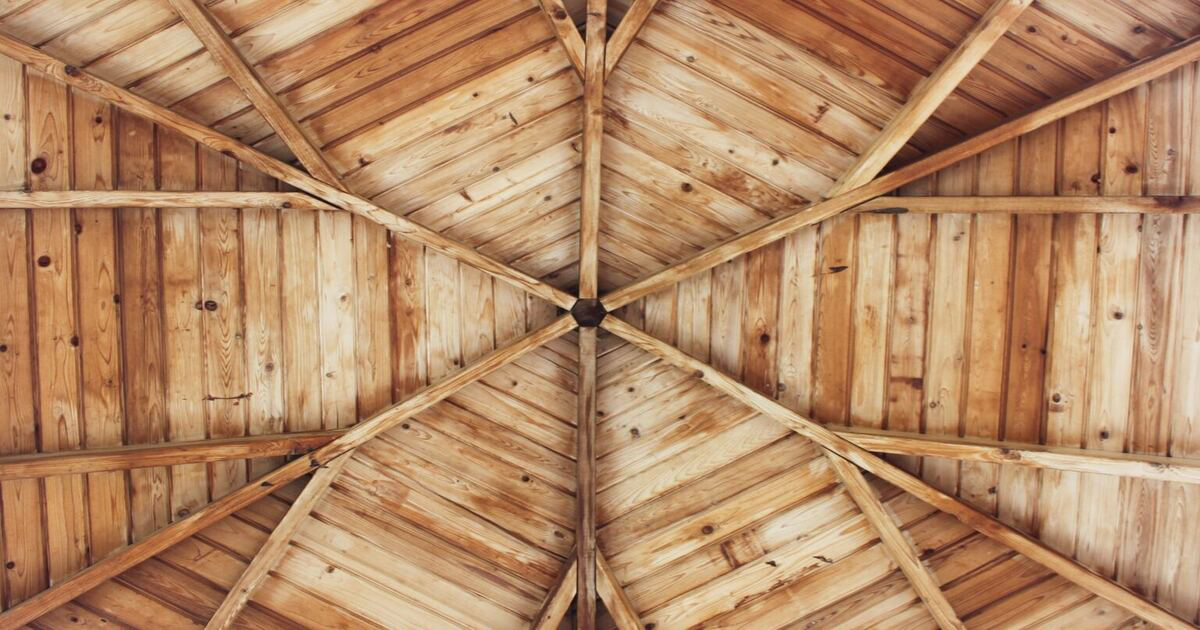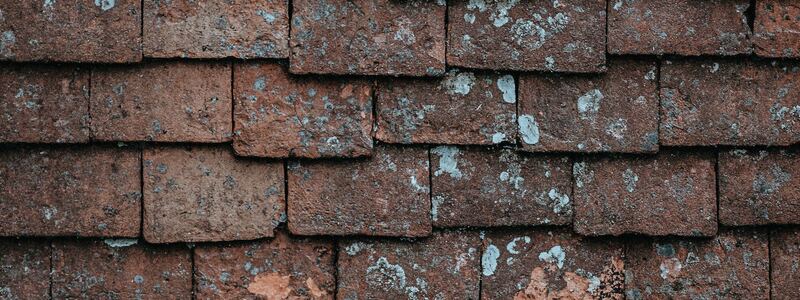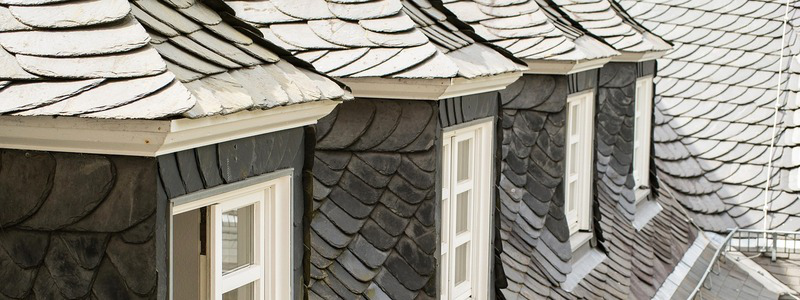
What Are Roofing Shingles Made Of
When it comes to protecting your home or business from the elements, few things play a more crucial role than the roof over your head. Roofing shingles, those overlapping, layered pieces that cover the surface of your roof, play a significant role in safeguarding your property and adding to its visual appeal. If you’ve ever asked yourself what materials roofing shingles are made of, you’re in the right spot.
In pursuing the ideal roofing solution, professional guidance can make all the difference. With an overwhelming array of roofing options and materials available, making an informed decision requires a comprehensive understanding of the unique characteristics of each material and its compatibility with your property.
Let’s look in-depth at roofing shingles, their composition, different types, and everything that falls within these categories.

What Are Roofing Shingles Made Of Today?
Roofing shingles have come a long way from their humble beginnings. Today, they’re made from various materials that offer durability, longevity, and aesthetic value. While various types of shingles exist, the most common materials include asphalt, fiberglass, wood, metal, ceramic, concrete, slate, synthetic materials like rubber and plastic, and even solar shingles. These materials are carefully chosen to provide the best combination of looks, strength, weather resistance, insulation, and overall performance.
The Most Common Roof Shingle Material: Asphalt Shingles
Asphalt shingles are the most prevalent choice for roofing materials across the United States. If one had to answer the question of “What are roofing shingles made of?” with one word, that word would definitely be asphalt. These shingles comprise fiberglass or organic mat coated with asphalt and mineral granules. They balance affordability and reliability, making them an attractive option for homeowners and business owners.
Organic asphalt shingles contain more asphalt than fiberglass shingles, so they are generally more durable in punishing weather. Being heavier, they are more likely to withstand hail and frost without cracking. But because of their organic nature, they absorb more water and may warp; being heavier than fiberglass adds load to your roof, and they are less fire resistant.
Fiberglass asphalt shingles are lighter on the supporting structures and may not be as durable in stormy conditions, but their fiberglass core lasts better than their organic counterparts.
Modern asphalt shingles are engineered to resist harsh weather conditions, UV radiation, and even the impact of hail. Their construction allows for flexibility while maintaining structural integrity, which is crucial for withstanding temperature changes and natural movements of your home.
Do Roof Shingles Contain Asbestos?
Due to its fire-resistant and insulating properties, asbestos was used in construction materials, including roofing shingles. However, since the health risks associated with asbestos became well-known, its use in building materials was phased out. Therefore, roofing shingles manufactured today do not contain asbestos. Modern shingles are made with safety as a top priority, using materials that provide protection and peace of mind.
Avoid repairing your roof by yourself; opt for an expert roofing contractor to do the job.

What Are Roofing Shingles Made Of Besides Asphalt?
There is a diverse range of materials for roofing shingles. From the cost-effective qualities of asphalt to the enduring elegance of slate and the resilience of metal, each material offers its own set of advantages. Let’s see the different types of roof shingles:
Asphalt Shingles:
Asphalt shingle roofs are the most affordable for materials and installation. They are the most common choice of roof replacement material or new home roof installations. There are two main types of asphalt shingles, organic asphalt and fiberglass. They both come in three-tab or architectural styles.
3-tab asphalt shingles are a decent choice when on a tight budget, but they are thinner and wear out more quickly. Architectural shingles have an extra laminate layer that gives them contours and textures and can mimic other materials, providing an affordable and elegant alternative to the traditional flat 3-tab shingle.
Wood Shingles and Wood Shakes:
Wood shingles add a touch of natural beauty to your roof. Typically made from cedar or redwood, they offer excellent insulation and a charming, traditional look. However, they require more maintenance than some other shingle types. A more rustic option is wood shakes, where the wood tiles are hand split to give a rougher classy look. Wood shakes, typically cedar being split by hand, are the thickest wood roofing material on today’s market, providing better protection against heavy rain, hail and strong winds.
Metal Shingles:
Metal shingles, often made from materials like aluminum, copper, or steel, are known for their longevity and durability. They can last several decades and provide exceptional protection against the elements. An old-time classic with many modern variations, metal roofing, can be seen on centuries-old European buildings, many old church domes and several very modern structures. Relatively easy to install and lightweight, metal shingles are a good choice, especially when the roof support system is not very strong.
At B&M Roofing, we can help you explore options that offer durability and aesthetics while remaining within your financial comfort zone.
Clay tiles:
Clay tiles are made of all-natural materials and will maintain their rich earth tones and classic appearance for 100 years. They are fire-resistant and will not burn. They do not need much maintenance, and while they are usually seen in warmer climates, they work well in most environments.
However, they can be heavy, and the supporting structure may need reinforcement before opting for the relatively permanent solution of clay tiles.
Concrete Shingles:
These shingles are known for their robust nature, offering excellent resistance against harsh weather conditions, including heavy rains and strong winds. Their weight provides stability and longevity, making them a reliable option for long-term roofing solutions.
Synthetic Shingles:
As technology advances, so do our roofing options. Synthetic shingles, made from rubber, plastic, or polymer materials, offer a range of benefits, such as affordability, lightweight construction, and ease of installation.
Rubber shingles can look very similar to asphalt shingles. Their characteristics, cost and lifespan depend on the type of rubber, from the most affordable TPO and PVC to the most expensive EPDM roof.
Composite plastic shingles are another very affordable synthetic alternative. They can be shaped and colored to imitate pretty much anything and they are very light, which makes them easy to install and very forgiving for any weaknesses of the support structure. But they are not as long-lasting as most other shingle materials and may need the most frequent replacement and repairs.
Browse through our gallery of residential roofing projects to see our work!
Slate Shingles:
If you aim for a timeless and sophisticated appearance, slate shingles might be your choice. Made from natural stone, they can last over a century or two and lend a distinctive elegance to any structure. One of the most expensive options and heavy on the support structure too, but it is still an excellent roof option if you can afford it. Many love the natural beauty of it, while others find it dull as it does not come in any varying colors or shapes.
Solar Shingles:
Though not strictly shingles, as they lie flat next to each other, solar panels can replace shingles on the south side of your roof, so we can discuss them as an option here. Their high-tech appearance can give a very pleasing contrasting combination and though one of the most expensive options, they are typically installed on the south side only or just part of it and they can significantly reduce energy bills.

Types of Roof Shingles: Choosing the Right Material
Understanding the makeup of roofing shingles is crucial when deciding your property. From classic and reliable asphalt shingles to more intricate options like wood, metal, and synthetic materials, there is a wide variety of choices to cater to your preferences, needs, and budget. The days of asbestos-containing shingles are long gone, replaced with safer and more effective materials that ensure both the protection and the visual appeal of your home or business.
Choosing the suitable roofing material involves balancing your financial constraints and your roofing aspirations.
B&M Roofing’s commitment to quality extends beyond material recommendations. We are dedicated to employing skilled craftsmanship and utilizing high-quality materials during installation, ensuring that your chosen roofing solution is installed to last, regardless of the material you opt for.
Whether considering a roof replacement or constructing a new house, contact the B&M Roofing team for an appointment to discuss your options.




































